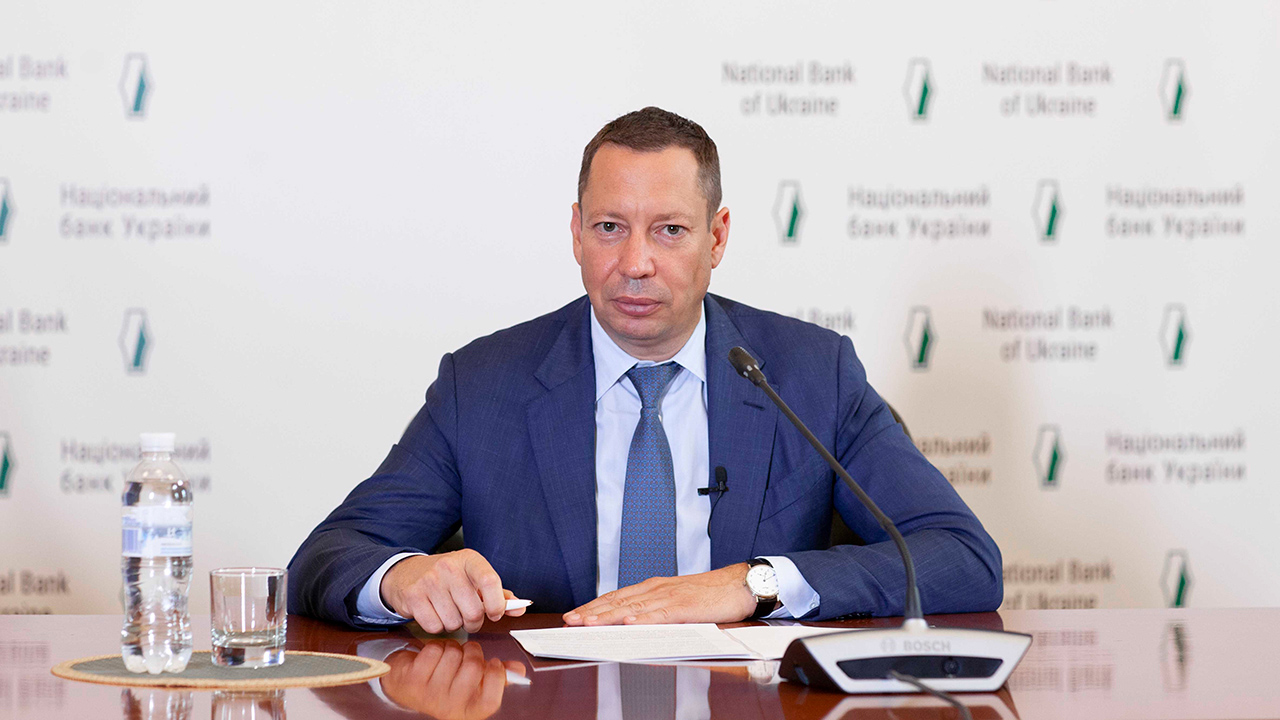Dear colleagues,
Please be informed that the Board of the National Bank of Ukraine has decided to keep its key policy rate unchanged, at 6% per annum. This on the one hand will curb price growth as the economy recovers in 2021–2022, while on the other hand leaving room for further decreasing the cost of credit to one-digit levels.
How did prices change in the past months?
Inflation is continuing to accelerate gradually, albeit remaining below the 5% ± 1 pp target range. Inflation rose to 2.4% in June, and continued to accelerate in July according to NBU assessments.
Inflation was mainly driven by raw food prices, which grew due to unfavorable weather. The inflation expectations of businesses and households have also worsened. At the same time, price growth has been restrained by weak domestic demand, benign FX market conditions, and relatively low energy prices.
How will prices behave in the future?
According to the new NBU forecast, inflation will continue to rise gradually and will return to the 5% +/- 1 pp target range this year.
In H2 2020, inflation will accelerate somewhat (to 4.7% as of the year-end) due to a number of factors – both external and internal.
First, the faster price growth will be driven by loose monetary and fiscal policies, which will mitigate the adverse effects of the COVID-19 pandemic, and support consumer demand and business activity.
Second, higher energy prices and the lower fruit harvest will affect prices.
Inflation will remain within the target range in 2021–2022.
What will be the overall state of the Ukrainian economy?
The NBU has revised its forecast of how much real GDP will drop in 2020 as a result of the coronavirus crisis, from 5% to 6%. The low-point of the fall was passed in Q2.
In H2 2020, the economy started to recover. With the quarantine restrictions eased, there has been a pickup in business activity.
The majority of businesses in the most affected sector – services – have already resumed normal operations. The labor market, although in a worse condition than before the crisis, is showing signs of stabilization.
Business activity and private consumption were given additional support by the NBU’s stimuli, loan repayment holidays, tax relief, and increased unemployment allowances from the budget.
However, the pace of economic recovery will be restrained, as consumer and investment demand remain subdued.
During the crisis, households significantly cut their spending on non-staple goods, while businesses put their development plans on hold and revised their staffing levels and payroll funds. Considering the high level of uncertainty over the spread of the coronavirus, both the public and businesses are likely to remain cautious about their consumer and investment decisions. The slow exit from the crisis by other countries, including Ukraine’s main trading partners, also limits the chances of a more rapid recovery of the economy.
In 2021–2022 the Ukrainian economy will continue to recover showing growth of around 4%, thanks to monetary and fiscal stimuli and higher foreign demand. Economic growth will mainly be driven by private consumption.
In addition, the NBU has significantly improved its current account forecast for 2020, from a zero deficit (compared to a deficit of 1.7% of GDP under the old methodology used in the April forecast) to a surplus of 4.4% of GDP. The current account will thus post a surplus for the first time in five years.
A significant drop in imports due to falling demand for durable goods, closed borders for travel, and low energy prices will contribute to the current account surplus.
Given the stable global demand for food, the pandemic will affect exports less than imports. In addition, the amount of remittances into Ukraine from labor migrants will be larger than expected.
That said, in the years to come, the current account will return to deficit on the back of pent-up consumer and investment demand and the expected decrease in gas transit.
What does the realization of this forecast depend on?
The key assumption of this forecast is that Ukraine continues to cooperate with the IMF, as set forth in the Memorandum of Economic and Financial Policies.
Complying with the terms of a new Stand-By Arrangement with the IMF, including those that require that Ukraine conducts consistent fiscal and monetary policies, will safeguard macroeconomic stability, which is required for a steady and continued economic recovery.
Support from the IMF is important for financing budget expenditures on overcoming the effects of the pandemic, repaying government debt in due time and in full, maintaining access to the international capital markets, and ensuring that international investors retain their interest in Ukrainian assets.
Financing from the IMF and other official international partners will help Ukraine to significantly increase its international reserves. International reserves are expected to rise to about USD 30 billion in 2020, growing to USD 32 or 33 billion in the coming years.
A longer-lasting coronavirus pandemic and the potential return to stricter quarantine measures required to overcome it, both in Ukraine and globally, remain the key risk to this forecast. This could result in a more significant and longer-lasting cooling of both the global and the Ukrainian economy.
Other risks also remain significant. They include:
- the negative impact of certain court rulings on macrofinancial stability
- an escalation of the military conflict in eastern Ukraine
- the higher volatility of global food prices, driven by global climate change and the risk of stronger protectionist measures.
Given the gradually accelerating inflation and the above balance of risks, the NBU Board kept the key policy rate unchanged, at 6%.
How does the NBU intend to change the key policy rate in future?
The NBU expects to keep the key policy rate at the current low level at least until the end of the current year.
Next year, the NBU will take decisions on the key policy rate taking into account whether or not inflationary risks materialize, how social standards change, and at what pace the economy is recovering.
By keeping the key policy rate at 6%, the NBU leaves enough room for monetary stimulus in order to provide the economy with additional impetus for growth if consumer and investment demand recover more slowly than expected.
Thank you for your attention!


